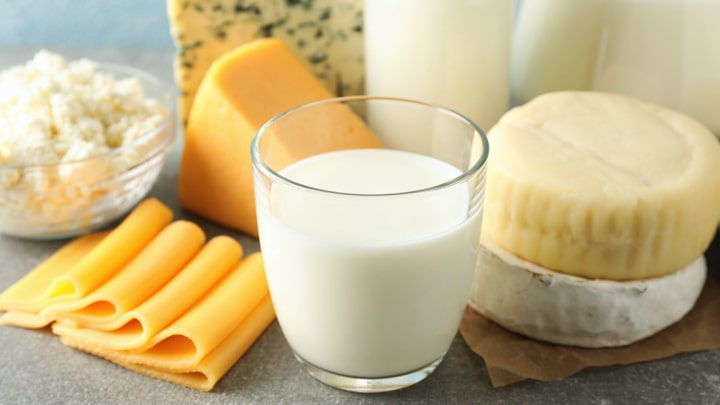
A milk allergy is an immune response to the proteins in cow’s milk, and milk is considered a key allergen under the Australia New Zealand Food Standards Code.
There are two proteins in cow’s milk that can cause an allergic reaction:
- Casein - found in the ‘curd,’ which is the solid part of milk that curdles
- Whey - found in the liquid part of milk that remains after milk curdles
A person may be allergic to only one milk protein or to both. Most (but not all) people who react to cow’s milk will also react to sheep’s, goat and buffalo milk.
Labelling regulations set by the Food Standards Code require milk ingredients to be declared if they are present as ingredients or as components of food additives or processing aids. If food is not labelled, this information must be made accessible to consumers when they ask for it. Many allergenic foods can go by different names on food labels, and it’s a Food Handler’s obligation to be able to spot and identify these potentially hidden ingredients.
Here are 10 surprising foods that Food Handlers may not know contain milk or its ingredients:
1. Cocktails and Mocktails
While alcohol may not spring to mind as being a potential source for dairy, there are a variety of alcoholic and nonalcoholic beverages that fall into this group, including eggnog, creamy liqueurs like Baileys and Amarula, White Russians (vodka, Kahlua and cream), chocolate martinis, and gin fizzes (this can also contain egg instead of dairy).
2. Battered and Fried Foods
For breaded foods like chicken strips, fish filets, and corndogs, dairy-based ingredients like buttermilk can often be used for flavour and as binding agents.
3. Salad Dressings
Cream-based salad dressings are more easily identifiable as containing milk ingredients, but dressings can be deceptive. Thousand Island dressing looks creamy, but many recipes use mayonnaise and not cream; whereas many vinaigrette-style dressings that appear to be oil-based may also contain parmesan or other cheeses for flavour.
4. Nougat
A honey-based staple in candy and chocolate bars is typically made with egg whites, nuts, sugar and honey; however, some recipes can contain milk powder.
5. Sherbet and Sorbet
Often confused with Sorbet, Sherbet is typically a fruit-based product with added dairy – essentially a different type of ice cream. Sorbet is usually made with a simple sugar syrup, infused with fruit puree or juice. Food Handlers should still check sorbet ingredients thoroughly, however, because sorbet can also include other additives like chocolate, which would then put it at risk for milk ingredients.
6. All-Beef Hot Dogs
Despite their somewhat misleading name, many all-beef products contain additional ingredients to help bind, preserve or add flavour. Modified milk ingredients are often found farther down in the ingredient listings for these products, after water and a thickening agent like cornstarch.
7. Deli Meats and Sausages
Milk protein may be used as a filler or extender in the processing of deli meats and sausages like Italian or breakfast sausages and salami. Additionally, deli meat slicers are frequently used for both meat and cheese products, which can lead to cross-contamination.
8. Gravy and Bouillon
Whey is a common ingredient used for texture in many gravies and bouillon bases – even those that may be marketed as or named “all-beef”.
9. Lactose-Free Milk
There is a difference between a milk allergy and a lactose intolerance. This milk is designed for those affected by the latter. Lactose is a saccharide (a sugar), not to be confused with a milk protein, which is what causes an allergic reaction. If a customer has a milk allergy, Lactose-free milk is not suitable for them.
10. Protein and Energy Drinks/Supplements
Two milk-based ingredients, whey and casein, are two of the most popular ingredients in protein powders and energy drinks due to their high protein content, creamy texture and inoffensive taste.
This list is not exhaustive. There are many more foods that may be hidden sources of milk products. It is imperative for Food Handlers to become familiar with the various names of milk ingredients and read every label before using the item in question.
For more information and specific training on allergen management in a food business, visit our Food Allergen Management Course page. Also check out our related blog on 7 Foods You Didn’t Know Contain Eggs.




